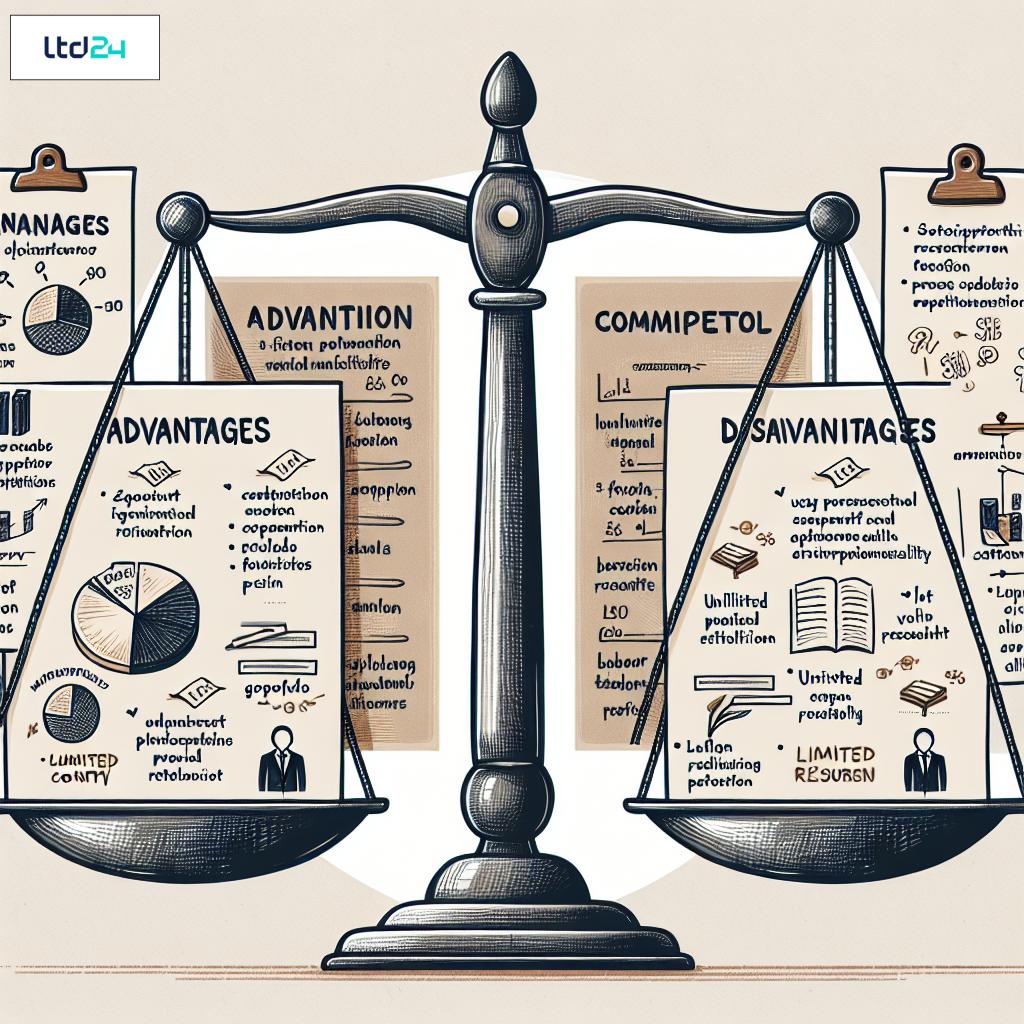The Distinction Between Company Names and Business Operations
Entrepreneurs often encounter the fundamental question of whether they can secure a company name without having established a functional business. The United Kingdom’s legal system draws a clear distinction between the registration of a company name and the actual operation of a business entity. In accordance with the Companies Act 2006, registering a company name at Companies House establishes a separate legal entity, which can exist independently from active business operations. This distinction is pivotal for entrepreneurs planning future ventures or wishing to protect a particular trading name in anticipation of subsequent business development. The registration process primarily concerns the creation of the corporate legal shell, rather than mandating immediate commercial activity. Business name registration serves as a protective mechanism in the competitive marketplace, allowing entrepreneurs to secure their desired corporate identity before launching operations. For comprehensive guidance on the registration process, the UK Companies Registration and Formation page offers detailed insights.
Legal Framework for Company Name Registration in the UK
The regulatory framework governing company name registration in the United Kingdom is established primarily through the Companies Act 2006 and associated statutory instruments. When registering a company name without immediate business operations, applicants must still adhere to the legal requirements stipulated by Companies House. The name must not be identical or overly similar to an existing registered company, must not contain sensitive words or expressions without appropriate authorization, and must not suggest connection with governmental bodies without permission. The Companies (Trading Disclosures) Regulations 2008 further mandate that even dormant companies display their registered name at their registered office and in business communications. This comprehensive legal framework ensures the integrity of the UK business registry while allowing for the separation of name registration from active trading. Legal advisors consistently reference the landmark case of Salomon v A Salomon & Co Ltd [1897] as establishing the principle of corporate separate legal personality, which underpins the ability to register a company without immediate business operations. The Intellectual Property Office provides additional guidance on protecting business names beyond company registration.
Benefits of Securing a Company Name in Advance
Proactive registration of a company name offers multiple strategic advantages for entrepreneurs and established businesses alike. Brand protection constitutes a primary benefit, as securing a name prevents competitors from appropriating distinctive branding elements that could potentially create market confusion. Investors and business planners often register company names to facilitate future expansion plans, securing corporate identity in anticipation of diversification strategies or new market entry. This approach provides a foundation for building brand equity before full-scale operations commence. Additionally, pre-registration simplifies the process of opening corporate bank accounts, establishing supplier relationships, and initiating preliminary marketing activities. For international operators, early name registration can protect intellectual property rights across multiple jurisdictions. The United Kingdom’s business environment is particularly conducive to this strategy, with minimal dormancy penalties for registered but non-trading entities. For entrepreneurs seeking to establish a UK business presence, the Setting Up a Limited Company UK resource provides valuable guidance on navigating these preliminary stages.
Dormant Company Status and Its Implications
A company registered without active business operations typically assumes dormant company status under UK tax regulations. HM Revenue & Customs (HMRC) defines a dormant company as one that is not carrying on business activity, trading, or receiving income. Dormant companies benefit from simplified filing requirements, including exemption from corporation tax returns when officially recognized as dormant by HMRC. However, dormant status does not exempt companies from other statutory obligations, including the submission of annual confirmation statements to Companies House and dormant company accounts. The Finance Act 2006 establishes the precise criteria for dormancy, requiring that no "significant accounting transactions" occur during the financial period. Directors of dormant companies maintain fiduciary responsibilities despite the absence of active operations. Should a dormant company subsequently commence trading, directors must notify HMRC within three months of the first accounting transaction. The Tax in Jersey Channel Islands page offers comparative insights into alternative jurisdictions for dormant company establishment.
Process for Registering a Company Name Without Trading
The procedural requirements for registering a company name without immediate business operations mirror the standard incorporation process. Entrepreneurs must submit the requisite documentation to Companies House, including the Articles of Association and Memorandum of Association, which establish the company’s constitution and operational framework. Directors and shareholders must be appointed, even if the company will initially remain dormant. The registration application must specify a registered office address, which serves as the company’s official correspondence location. Companies House registration fees remain applicable regardless of trading status, currently set at £12 for online submissions and £40 for paper applications. Upon successful registration, the company receives a Certificate of Incorporation and a unique Company Registration Number (CRN), establishing its legal existence. Professional formation agents frequently assist with this process, ensuring compliance with all statutory requirements while minimizing administrative burdens. For specialized assistance, the Formation Agent in the UK service provides expert support throughout the registration process.
Ongoing Compliance Requirements for Non-Trading Companies
Non-trading companies must maintain compliance with statutory requirements despite the absence of commercial activity. Annual filing obligations persist, including the submission of confirmation statements to Companies House and dormant company accounts within specified deadlines. Directors must update Companies House regarding any changes to registered details, including alterations to the registered office address, director information, or persons with significant control. The Small Business, Enterprise and Employment Act 2015 introduced additional transparency requirements applicable to all UK companies, including non-trading entities. Failure to comply with these obligations can result in penalties, with progressive increases for continued non-compliance. In extreme cases, Companies House can initiate strike-off procedures, removing non-compliant entities from the register. Directors remain personally liable for ensuring compliance with these requirements, regardless of the company’s operational status. For comprehensive guidance on navigating these continuing obligations, the Annual Compliance Services page provides valuable insights and professional support options.
Financial Implications and Costs Considerations
Entrepreneurs registering a company name without immediate business operations should consider several financial factors. The initial registration costs include Companies House filing fees, potential professional service charges if utilizing a formation agent, and costs associated with address services if a personal address is not used. Ongoing expenses for dormant companies typically include annual compliance costs, such as preparing and filing dormant accounts and confirmation statements. While dormant companies generally incur lower operational costs than active businesses, maintenance expenses remain. The Companies (Late Filing Penalties) Regulations 2008 establish financial penalties for late submission of accounts, applicable to dormant companies though often at reduced rates. Professional accounting services frequently offer specialized dormant company packages, providing cost-effective compliance support. Entrepreneurs should also consider opportunity costs and the potential depreciation of intangible assets during extended dormancy periods. The decision to register must balance immediate protection benefits against ongoing administrative costs. For detailed information on UK Company Taxation, prospective registrants can access comprehensive guidance on fiscal implications.
Protecting a Company Name Through Alternative Methods
While company registration provides substantial protection for business names, entrepreneurs should consider complementary protective mechanisms. Trademark registration through the UK Intellectual Property Office offers enhanced legal protection beyond company registration, particularly valuable if business operations are anticipated but not immediate. Trademark protection extends to specific goods and services associated with the business name, providing recourse against unauthorized use. Domain name registration secures online presence and prevents cybersquatting, particularly important in the digital economy. Social media handle registration, though not offering formal legal protection, establishes brand consistency across digital platforms. Common law passing-off rights can develop through marketplace reputation, even without formal registration. International protection may require additional registrations under frameworks like the Madrid Protocol for trademarks. For comprehensive guidance on protective strategies, the How to Protect a Company Name resource provides specialized insights on safeguarding corporate identity through multiple legal mechanisms.
Transitioning From Registration to Active Trading
When transitioning from a dormant registered company to active operations, several procedural requirements must be addressed. Notification obligations include informing HMRC within three months of commencing trading activities, typically accomplished through the activation of the company for corporation tax purposes via HMRC’s online services. Directors must ensure the company is registered for appropriate taxes, potentially including VAT if the taxable turnover threshold is expected to be exceeded. Payroll registration becomes necessary if employees will be hired. Banking arrangements should transition from dormant status to active business accounts, with commercial banking facilities established as needed. The company’s accounting reference date may require reconsideration to align with the operational business cycle. Directors should review and potentially update the Articles of Association to ensure alignment with the intended business activities. Professional advisors typically recommend developing formal business and financial plans before activating previously dormant companies. For guidance on establishing operational systems, the Set Up an Online Business in UK resource provides valuable insights for digital ventures.
International Perspectives on Name Registration Without Trading
Jurisdictional approaches to company name registration without active operations vary significantly across international business environments. The Delaware corporate framework in the United States is particularly accommodating to shell company registrations, with minimal disclosure requirements and no immediate operational obligations. This contrasts with certain European jurisdictions, including Germany and France, where economic substance requirements may create challenges for non-trading entities. Offshore financial centers, including the British Virgin Islands and Cayman Islands, offer specialized structural options for holding company registrations without active business operations. The OECD’s Base Erosion and Profit Shifting (BEPS) initiative has introduced increasing substance requirements for international corporate structures, potentially impacting non-trading company arrangements. For multinational enterprises, understanding these jurisdictional variations is essential when developing global name protection strategies. The European Union Trade Mark system provides regional protection across EU member states, complementing national company registrations. For international entrepreneurs, the Offshore Company Registration resource offers comparative analysis of registration options across multiple jurisdictions.
Potential Risks and Limitations
Despite the apparent simplicity of registering a company name without active operations, several risks warrant consideration. Maintenance default represents a primary concern, as failure to comply with ongoing filing requirements can result in compulsory strike-off and potential personal liability for directors. The Companies Act 2006 Section 1000 empowers the Registrar to strike off companies believed to be non-operational. Extended dormancy may complicate future banking relationships, as financial institutions increasingly scrutinize corporate histories when establishing accounts. Reputational risks exist if the company name becomes associated with dormancy rather than active business, potentially diminishing marketplace value. The Business Names Act 1985 provisions regarding "passing off" may create liability if the registered name infringes existing trading names, even without active operations. Tax authorities may question long-term dormancy as potentially indicative of improper corporate utilization. For businesses operating across borders, the Permanent Establishment Taxation resource provides essential guidance on avoiding unintended tax consequences from international corporate structures.
Business Planning Considerations for Name-Only Registrations
Entrepreneurs pursuing company name registration without immediate trading should integrate this decision within a comprehensive business planning framework. Strategic timing considerations should address anticipated market entry points, competitive landscape developments, and funding availability timelines. Business plans should articulate specific milestones that will trigger the transition from dormancy to active operations, establishing clear activation criteria. Financial planning must account for both dormancy maintenance costs and capitalization requirements for eventual business activation. Intellectual property development can proceed during dormancy, potentially enhancing the company’s value before trading commences. Stakeholder expectations require careful management, particularly for investors or potential business partners anticipating active operations. Market research and concept validation can continue during dormancy periods, refining the business model before formal launch. Directors should document the commercial rationale for advance registration, protecting against potential challenges to business purpose. For comprehensive guidance on business structuring, the UK Ready-Made Companies resource outlines alternative approaches to establishing corporate presence with expedited timelines.
Taxation Considerations for Non-Trading Companies
The tax treatment of non-trading registered companies presents several specialized considerations. Dormant status recognition by HMRC typically requires formal notification through the corporation tax registration process, with explicit acknowledgment of non-trading status. Once recognized as dormant, companies generally receive exemption from corporation tax return filing obligations, though this exemption requires annual confirmation. Directors should remain cognizant that dormant status is determined by HMRC independently from Companies House registrations, with different criteria potentially applying. The Finance Act 2006 establishes the "significant accounting transactions" test, whereby even minimal financial activity may negate dormant status. Non-trading companies with investment assets must carefully assess whether income generation from these assets might constitute trading activity under HMRC interpretations. International tax considerations include potential substance requirements under various tax treaties and information exchange frameworks. The Corporation Tax Act 2010 provisions regarding close companies may impact future distribution strategies when dormant companies activate. For specialized guidance on navigation tax obligations, HMRC Business Tax Account provides valuable resources for managing corporate tax compliance.
Using Formation Agents for Name-Only Registrations
Professional formation agents offer specialized services for entrepreneurs seeking company name registration without immediate business operations. These agents provide compliance management throughout the registration process, ensuring documentation meets Companies House standards and minimizing rejection risks. Formation packages typically include registered office address services, essential for companies without physical premises. Many agents offer director service options, particularly valuable for international entrepreneurs lacking UK resident directors. Company secretarial services can manage ongoing filing requirements during dormancy periods, ensuring continued compliance without administrative burden on the registrant. Agents frequently provide ready-made company options as alternatives to new registrations, offering immediate availability of pre-registered entities. Professional guidance regarding name selection can prevent potential rejection based on "sensitive word" restrictions or similarity to existing companies. When selecting formation agents, entrepreneurs should consider specialization in dormant company management, transparency regarding ongoing costs, and reputation for regulatory compliance. The UK Company Incorporation and Bookkeeping Service provides comprehensive support throughout both the registration and maintenance phases of company establishment.
Banking Considerations for Non-Trading Entities
Banking arrangements for non-trading registered companies present unique challenges and opportunities. Dormant accounts designed specifically for non-trading entities offer limited functionality with reduced fee structures, suitable for maintaining minimal financial presence. When establishing such accounts, banks typically require full corporate documentation despite dormant status, including incorporation certificates, director identification, and beneficial ownership disclosure. Anti-money laundering procedures have intensified scrutiny of dormant entities, particularly those without clear future operational plans. International banking relationships for non-trading companies frequently require enhanced due diligence, with institutions applying stringent economic substance assessments. Corporate directors should maintain clear documentation regarding the commercial rationale for advance registration to satisfy banking compliance requirements. Some financial institutions offer specialized services for holding companies and asset protection structures, potentially applicable to non-trading registered entities. For future operational readiness, establishing preliminary banking relationships during dormancy can facilitate smoother transition to active trading. The Anti-Money Laundering Verification resource provides insights into navigating increasingly stringent financial compliance requirements.
Legal Case Studies and Precedents
Jurisprudential developments have clarified the legal status and implications of non-trading registered companies. In the landmark case of Salomon v A Salomon & Co Ltd [1897], the House of Lords established the foundational principle of corporate separate legal personality, confirming that companies exist as distinct legal entities regardless of operational status. The First National Bank v Avalon Development [1998] decision addressed dormant company revival, establishing that extended periods of inactivity do not inherently compromise corporate rights upon reactivation. In Re German Date Coffee Company [1882], the court considered the legal implications of companies registered for purposes that never materialize, establishing important principles regarding corporate purpose and dissolution. Contemporary cases including Prest v Petrodel Resources Ltd [2013] have refined the circumstances under which courts might "pierce the corporate veil," potentially relevant for companies established primarily for name protection. These precedents collectively establish the robust legal foundation for registering company names without immediate trading activities, while defining the boundaries of appropriate utilization. For entrepreneurs navigating complex legal frameworks, the What is a Company Registration Number resource provides fundamental guidance on corporate identity documentation.
Directors’ Responsibilities in Non-Trading Companies
Directors of non-trading registered companies maintain substantial legal obligations despite the absence of active operations. The fiduciary duties established under the Companies Act 2006 apply fully to dormant company directors, including the duty to promote the company’s success, exercise independent judgment, and avoid conflicts of interest. Directors remain personally liable for ensuring compliance with statutory filing requirements, with potential disqualification under the Company Directors Disqualification Act 1986 for persistent non-compliance. The duty to exercise reasonable care, skill, and diligence applies to dormancy management decisions, including protective measures for the registered name. Corporate governance best practices recommend maintaining regular board meetings with appropriate documentation, even during dormancy periods. Directors should ensure proper maintenance of statutory registers and company records despite inactive status. For international structures, directors must remain cognizant of cross-border reporting obligations, potentially including economic substance requirements. The Be Appointed Director of a UK Limited Company resource provides comprehensive guidance on directorial responsibilities within the UK corporate framework.
Future Considerations and Strategic Planning
Forward-looking assessment remains essential when registering company names without immediate business operations. Market conditions affecting eventual business activation should be monitored continuously, with dormancy periods potentially adjusted based on evolving competitive landscapes. Regulatory developments, including potential reforms to corporate transparency frameworks, may impact compliance requirements for dormant entities. Periodic reassessment of the commercial rationale for maintaining dormant status helps ensure alignment with broader business objectives. Succession planning for dormant company control deserves consideration, particularly for long-term name protection strategies. Directors should establish clear activation triggers defining when dormant status should transition to active operations. For companies with international aspirations, preliminary cross-border structural planning during dormancy can facilitate eventual global expansion. Technology innovations affecting industry sectors may influence optimal timing for transitioning from registration to operation. Regular review of registered names against emerging competitors helps maintain the strategic value of the registration. For comprehensive guidance on navigating business expansion, the Overseas Expansion resource provides strategic frameworks for international growth planning.
Common Misconceptions About Name-Only Registrations
Several persistent misconceptions surround the practice of registering company names without active operations. Contrary to popular belief, dormant companies are not exempt from all filing requirements, but rather maintain specific obligations distinct from active entities. The misconception that dormant companies cannot hold assets is incorrect; non-trading companies may own intellectual property and other assets without necessarily engaging in trade. Some entrepreneurs incorrectly believe that name registration automatically provides trademark protection, overlooking the distinct legal frameworks governing these protections. The assumption that dormant companies can remain indefinitely inactive without consequences ignores potential strike-off procedures for extended non-compliance. Many incorrectly presume that directors of dormant companies bear reduced responsibilities, when fiduciary duties remain fully applicable. The misconception that dormant status is determined solely by self-declaration overlooks HMRC’s independent assessment criteria. Some incorrectly believe that dormant companies are exempt from beneficial ownership disclosure requirements under the Persons with Significant Control regime. For clarification of corporate transparency obligations, the Persons with Significant Control resource provides authoritative guidance on disclosure requirements.
Practical Steps for Maintaining a Registered Non-Trading Company
Effective maintenance of non-trading registered companies requires systematic attention to compliance requirements. Implementing a corporate compliance calendar ensures timely submission of confirmation statements, dormant accounts, and other statutory filings. Directors should conduct annual reviews of company details, confirming continued accuracy of registered office address, director information, and persons with significant control. Formal documentation of dormancy status through board resolutions provides evidence of intentional non-trading status. Maintaining minimal financial activity preserves dormant status under HMRC criteria, typically requiring separate accounting procedures from personal or other business finances. Regular monitoring of the registered name’s marketplace value helps inform decisions regarding continued dormancy or activation. Professional service providers often offer dormant company maintenance packages, providing cost-effective compliance management. Digital record-keeping systems specifically designed for dormant entities can simplify documentation requirements. For international structures, compliance with cross-border reporting obligations requires particular attention. The Company Secretarial Service resource offers specialized support for maintaining corporate compliance across multiple jurisdictions.
Expert Support for Your Business Registration Needs
Navigating the complexities of company registration and maintenance requires specialized expertise, particularly when balancing legal protection with operational flexibility. At LTD24, we understand the strategic advantages of securing corporate identity in advance of operations, along with the compliance obligations this entails. Our team of international tax and corporate specialists provides comprehensive support throughout the company lifecycle, from initial registration through dormancy management and eventual activation. We offer tailored solutions for entrepreneurs at every stage of business development, with particular expertise in cross-border structures and multi-jurisdictional compliance requirements. Whether you’re securing intellectual property, planning for future expansion, or establishing holding structures, our consultants deliver pragmatic guidance aligned with your business objectives. For specialized assistance with company registration, dormancy management, or international tax planning, we invite you to explore our comprehensive corporate services at LTD24.co.uk.
International Tax Planning and Strategic Business Development
If you’re seeking expert guidance on international tax planning or strategic business development, we invite you to book a personalized consultation with our specialized team.
We are a boutique international tax consultancy with advanced expertise in corporate law, tax risk management, asset protection, and international auditing. We deliver customized solutions for entrepreneurs, professionals, and corporate groups operating on a global scale.
Schedule a session with one of our experts now at $199 USD/hour and receive concrete answers to your tax and corporate inquiries. Book your consultation today.










